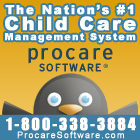Don't Happy, Be Worried
The Exchange book, Places for Childhoods: Making Quality Happen in the Real World — a collection of articles by Jim Greenman, includes an article written in 1989, "Don't Happy, Be Worried," which could just as well have been written in 2011. In the article Jim describes some of the stresses on programs wanting to provide quality — pressure from parents for programs to be more academic, the challenge in finding and affording talented teachers, the pressure to follow the latest trends (computers, serious art, shiny new classrooms). Here, in part, is his response...
"When we are swimming upstream in the waters of general opinion, we can't afford the gentility of 'raising consciousness.' We have to sell our ideas to aggressively market our view of the good life in child care.
"1. Sell childhood. Even the fastest track parents want their children to have happy childhoods. Reminding them of their childhoods and the learning and pleasure derived from 'messing about' with people and things and drawing out the child still lodged inside them rarely fails to bring a response....
"2. Sell education and learning, but not school. We need to be able to help parents delight in the educational value of their child's developmentally appropriate play. If we are not able to articulate the serious intellectual content of what is happening — the infant exploring motorically the concepts of under and through, the toddler collecting and dumping, preschool dramatic and block play, and kindergarten classification — and if we are unable to explain how that content is far more likely to pave the road to a good university than the fraudulent numbers and letters recitations, then parents struggling to do the best for their children will buy sad imitations of schools. Why can't we help parents to see their children as delightful little scientists, architects, explorers, acrobats, and scholars who use all their senses, their whole bodies, and their own behavior as the tools for astonishingly thorough, albeit messy, investigations in the world of people and things?...
"3. Sell beauty and taste. Children need beauty in their lives. We may be able to avoid the home-beautiful/architectural digest syndrome in upscale programs with expensive buildings, if we accept both the need for taste and beauty and the need for exuberant, sensory, child-ordered settings — in short, lived-in places. If nicely appointed facades, foyers, offices, common spaces with fresh flowers, art, wicker, or whatever signals taste in the community buys active, lived-in classrooms (also with fresh flowers), those features are not frills.
Join 25,000 other child care centers just like yours that now operate more efficiently than ever before using our software & check-in solutions.

For more information about Exchange's magazine, books, and other products pertaining to ECE, go to www.ccie.com.
|
© 2005 Child Care Information Exchange - All Rights Reserved | Contact Us | Return to Site

